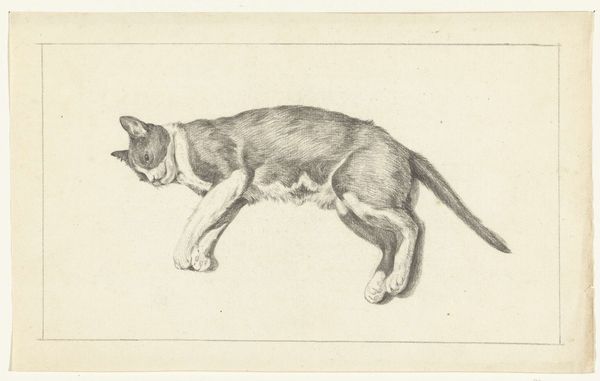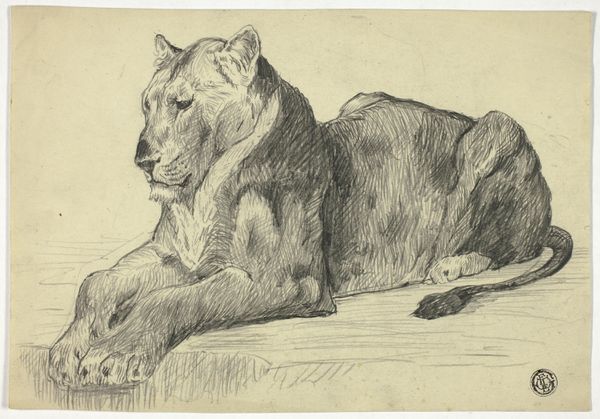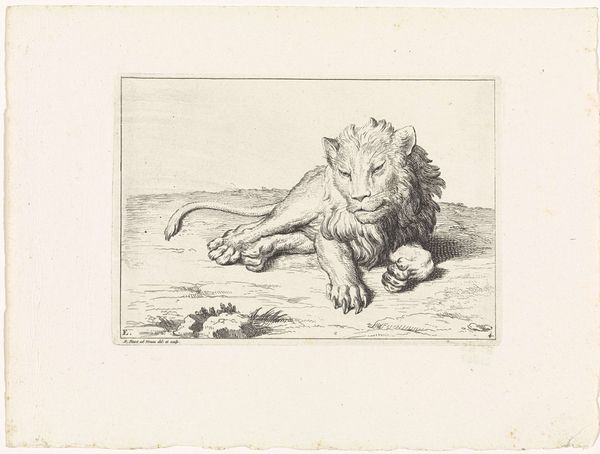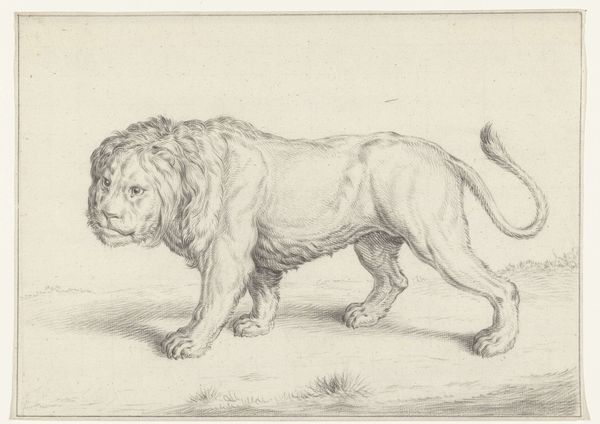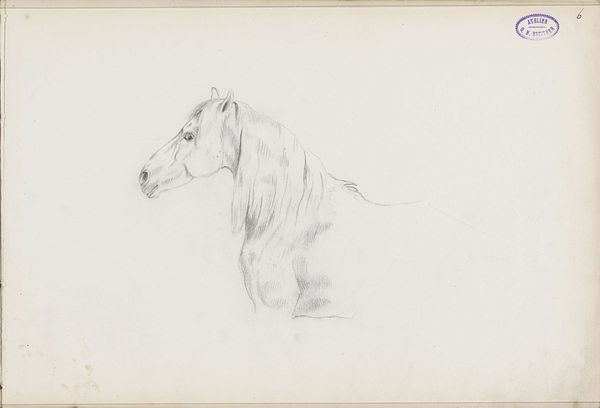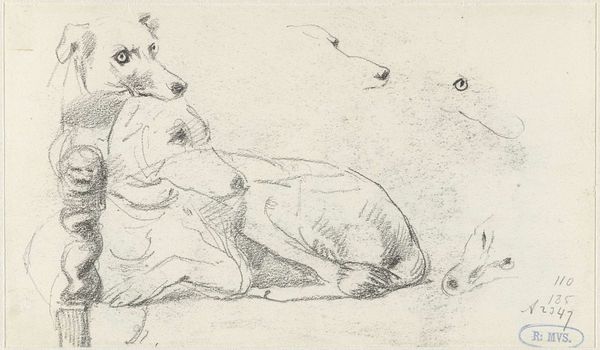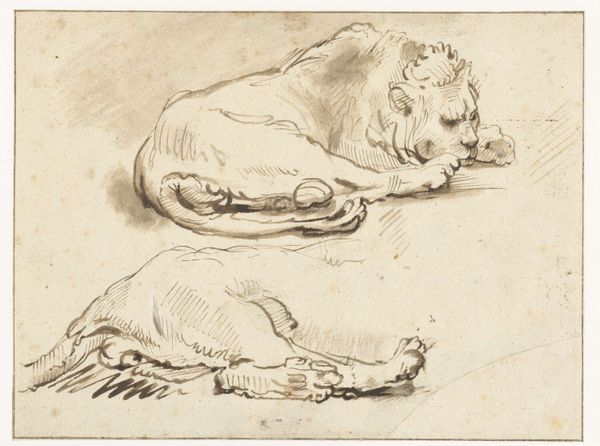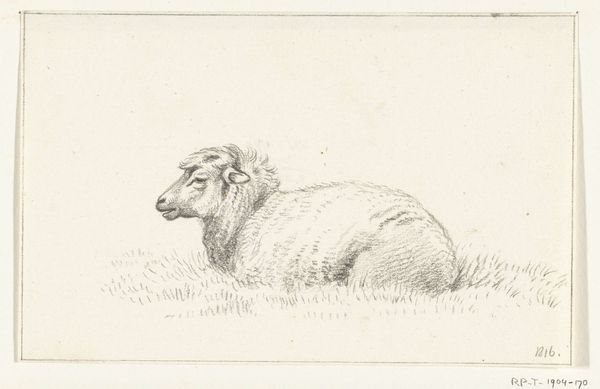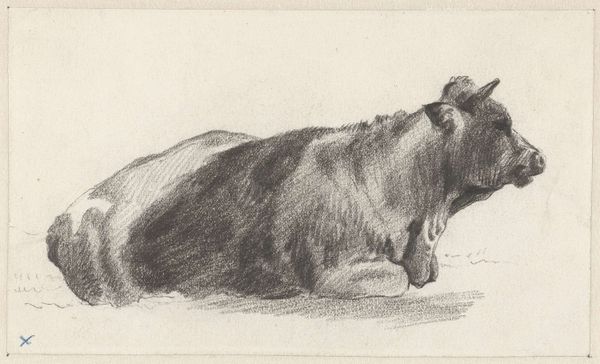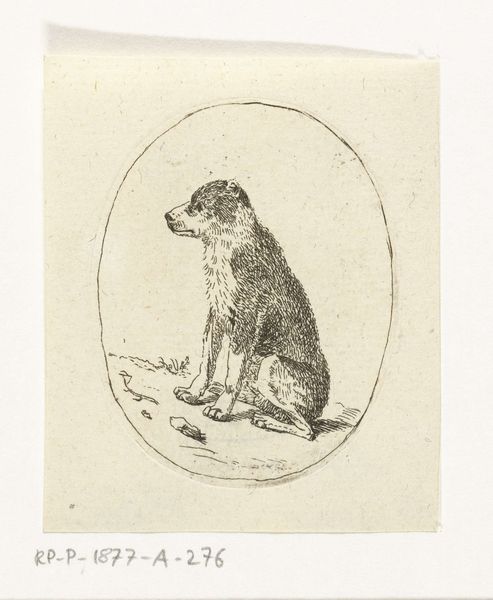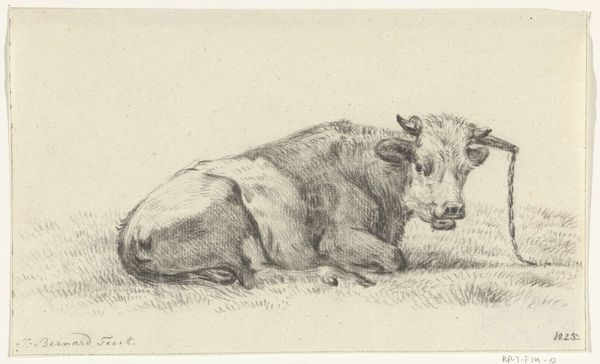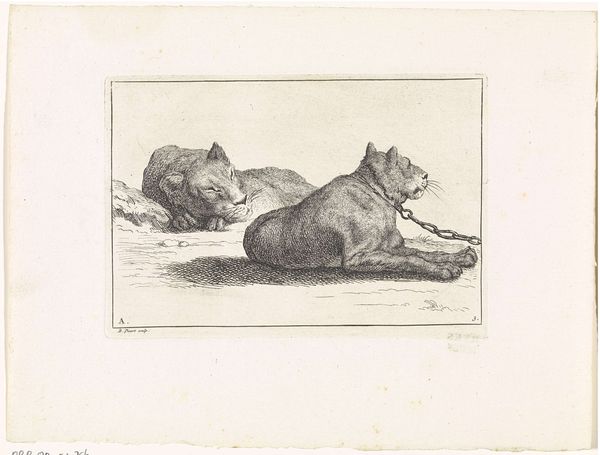
drawing, pencil
#
drawing
#
animal
#
landscape
#
pencil drawing
#
pencil
#
realism
Dimensions: height 157 mm, width 218 mm
Copyright: Rijks Museum: Open Domain
Editor: Here we have Jean Bernard's pencil drawing, "Liggende leeuw, de kop naar rechts gedraaid," dating from sometime between 1775 and 1833. There's something very still about this drawing, the lion seems almost melancholic. How do you interpret this work? Curator: The lion, historically, carries immense symbolic weight across cultures. It's a solar symbol of strength, royalty, and courage. But consider the pose: lying down, head turned. Is this a weakened king? A contemplative leader? Its stillness is a subversion of power we typically ascribe to the lion. Does that challenge or confirm our preconceived notions? Editor: It makes me think about vulnerability, even in the powerful. The realism of the pencil strokes also contributes to the natural portrayal. Curator: Exactly! Think of other leonine symbols, from heraldry to national emblems. This intimate, almost portrait-like depiction contrasts sharply with those grand, assertive images. By portraying the lion with such quiet intimacy, Bernard asks us to re-evaluate the layers of meaning projected onto the animal. Where does the animal end and the human-assigned idea of "lion" begin? Editor: So the drawing invites a kind of deconstruction of this widely known symbol. I hadn't thought about it like that. Curator: It does! And the seemingly simple medium—pencil on paper—enhances this direct connection, bypassing ornate grandeur for vulnerable observation. What feelings does that inspire for you? Editor: A sense of familiarity. It encourages me to see the lion not as a distant symbol, but as an individual. Curator: Precisely. By stripping away the symbolic armor, Bernard reveals something more human, a shared vulnerability that transcends species. Thank you, I’ve also learnt something new about this image today.
Comments
No comments
Be the first to comment and join the conversation on the ultimate creative platform.
